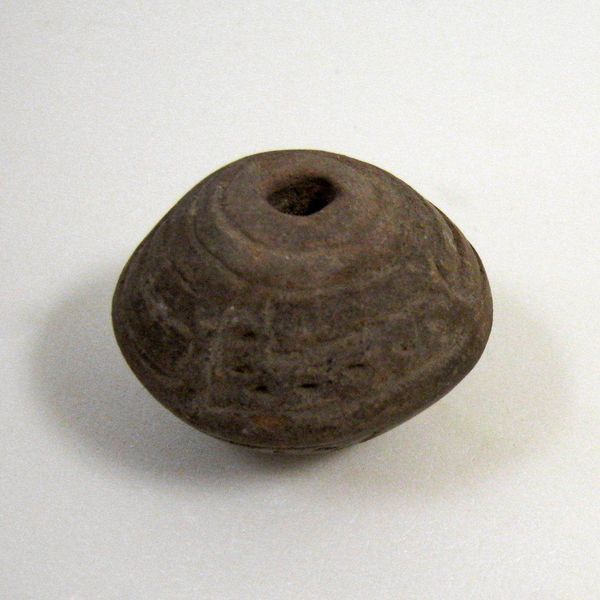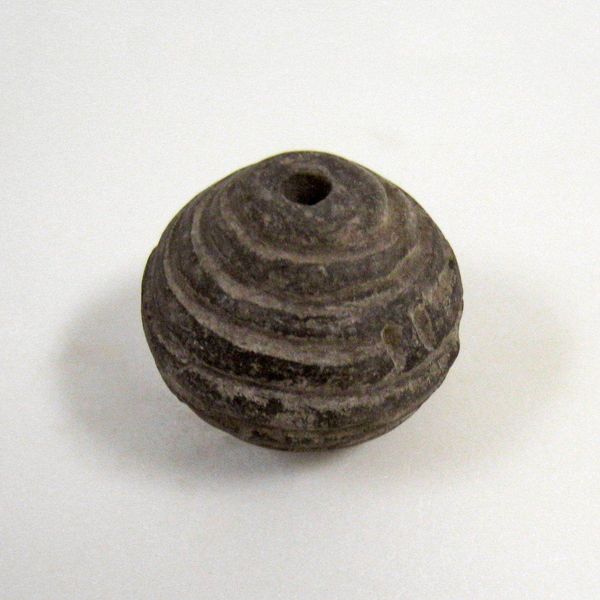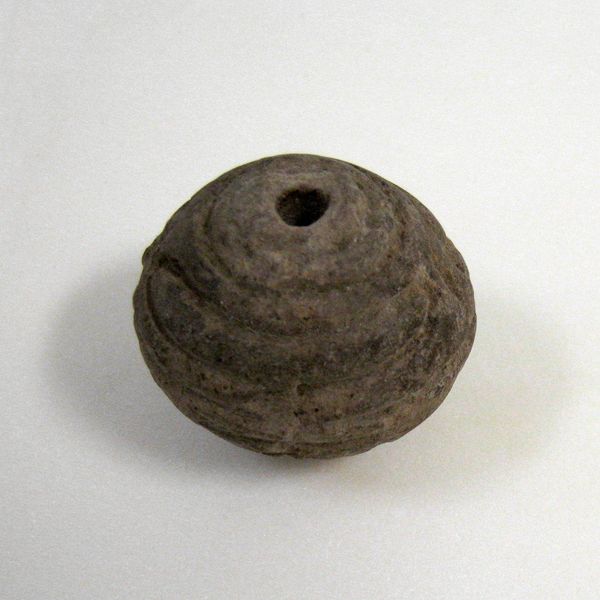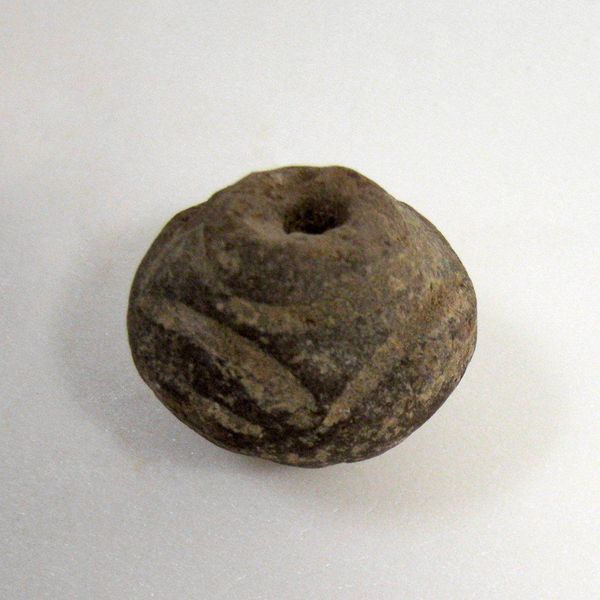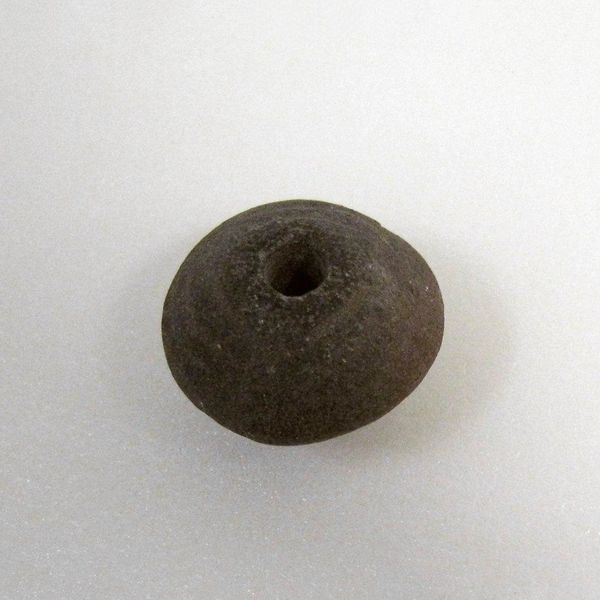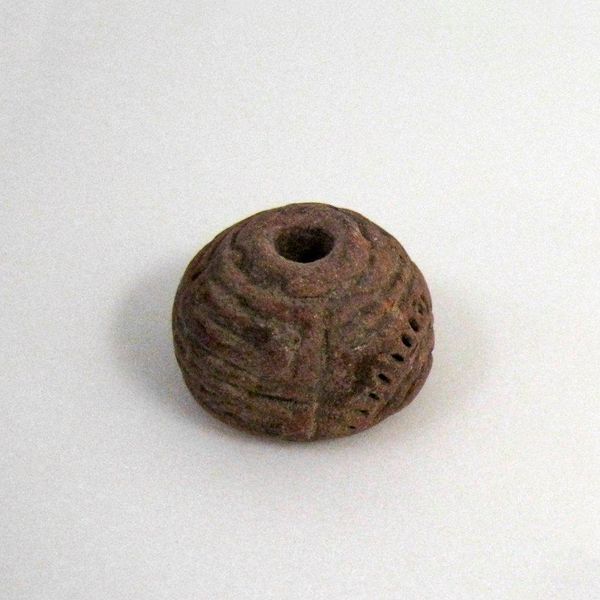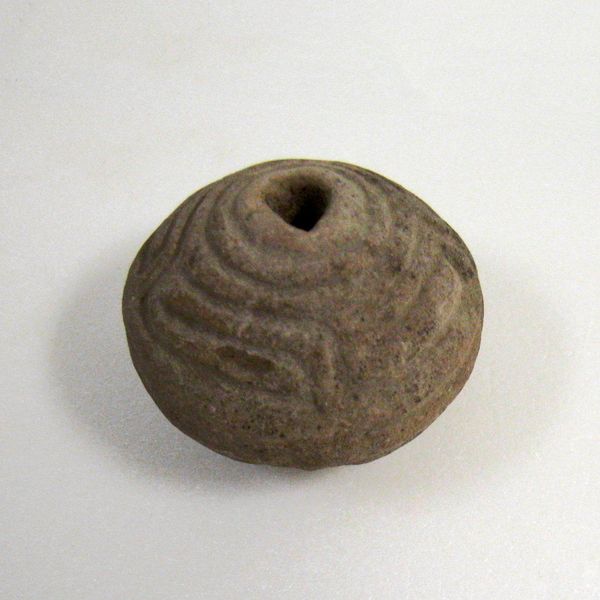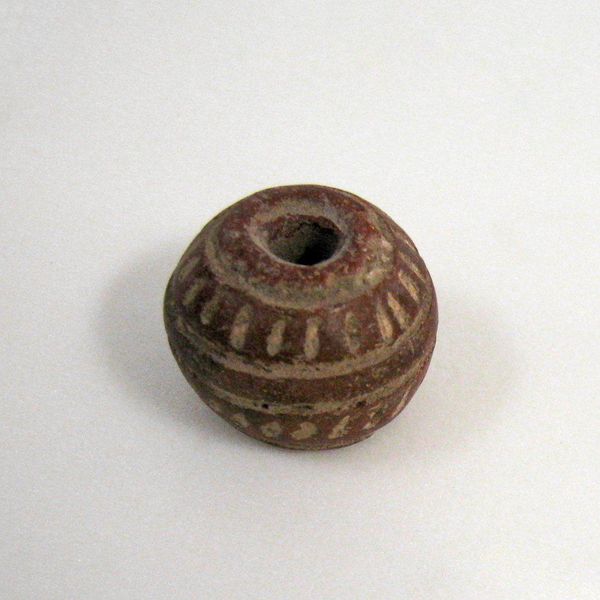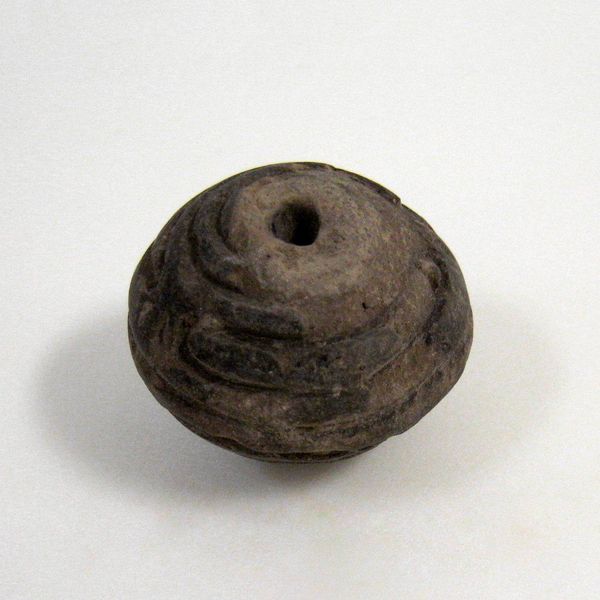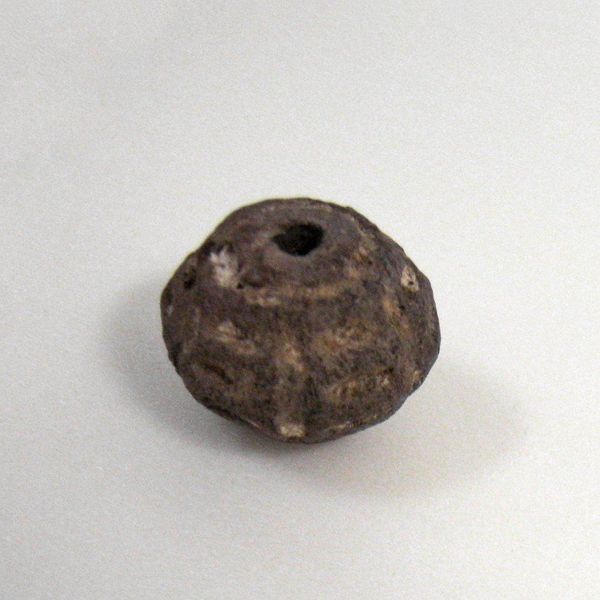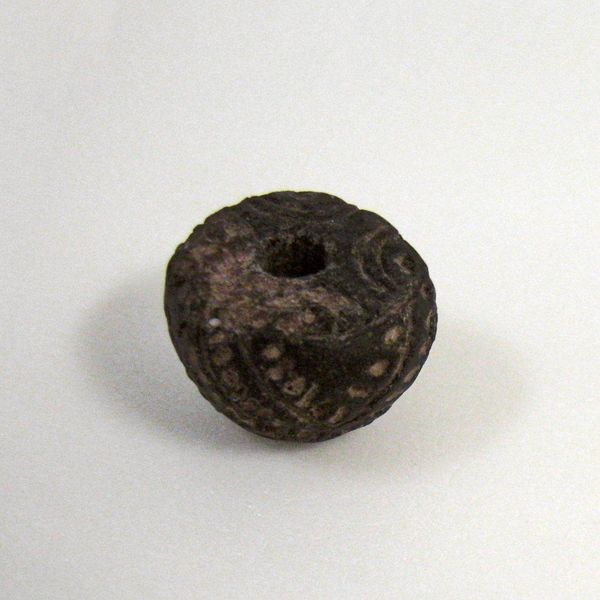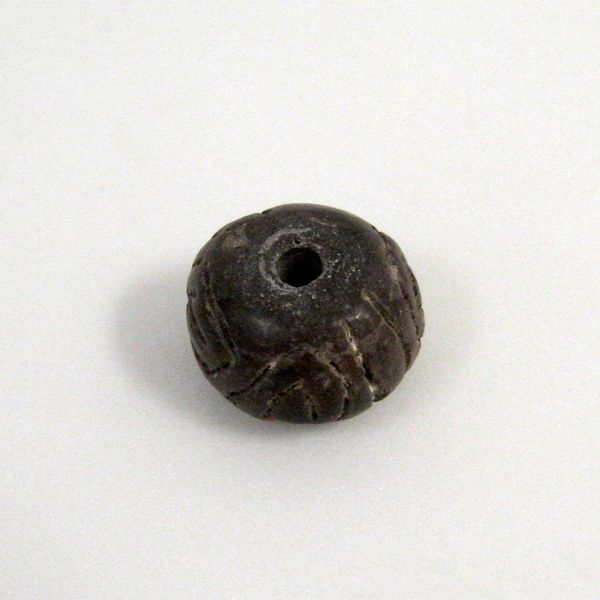
ceramic, earthenware, sculpture
#
sculpture
#
ceramic
#
form
#
earthenware
#
sculpture
Dimensions: 1/2 x 1 in. (1.27 x 2.54 cm)
Copyright: Public Domain
Curator: Here we have a ceramic spindle whorl of unknown date from the Americas. It’s currently housed here at the Minneapolis Institute of Art. Editor: It’s so unassuming! At first glance, it reads almost like a simple paperweight, but with an earthier tone and that central hole... I can already sense a history of manual labor and untold stories. Curator: Absolutely. This unassuming object speaks volumes about indigenous life. A spindle whorl like this would have been integral to the process of spinning fibers into thread, primarily cotton. The weight and form allow a drop spindle to spin evenly and prevent the thread from unwinding, which speaks to how female labor was central to clothing production. Editor: Precisely! I'm drawn to the tangible process – the repetitive hand motions involved in its use. The act of spinning, producing thread that would inevitably become cloth, reminds us of the hands that shaped our world, who created textiles for clothing, bedding, sails…What can we tell about the process behind the piece? What does the color or markings suggest? Curator: What fascinates me most about spindle whorls is how they collapse distinctions between the functional and the symbolic. Although seemingly utilitarian, whorls like these were often decorated, thus serving as powerful forms of visual expression, social identity and status, gender, and cosmological beliefs. The designs, usually abstract patterns, suggest how aesthetic and material practices reinforced each other within community life. The materiality—ceramic, earthenware, the work performed in shaping it —is key to understanding this interplay of art, labor, and social identity. Editor: It does make one consider how we value the art that stems from functional production. Why elevate a painting and marginalize this form of early industrial design? It is such a useful artefact that so subtly tells a whole range of production and material stories. Curator: I completely agree! The beauty of this humble whorl lies in its embodiment of a convergence of artistry, functionality, and gendered labor. In this simple yet elegant sphere we confront entrenched Western hierarchies between fine and decorative arts, craft, and design. Editor: It's a small object with enormous implications, demanding a rethinking of art and its relation to everyday existence.
Comments
No comments
Be the first to comment and join the conversation on the ultimate creative platform.
